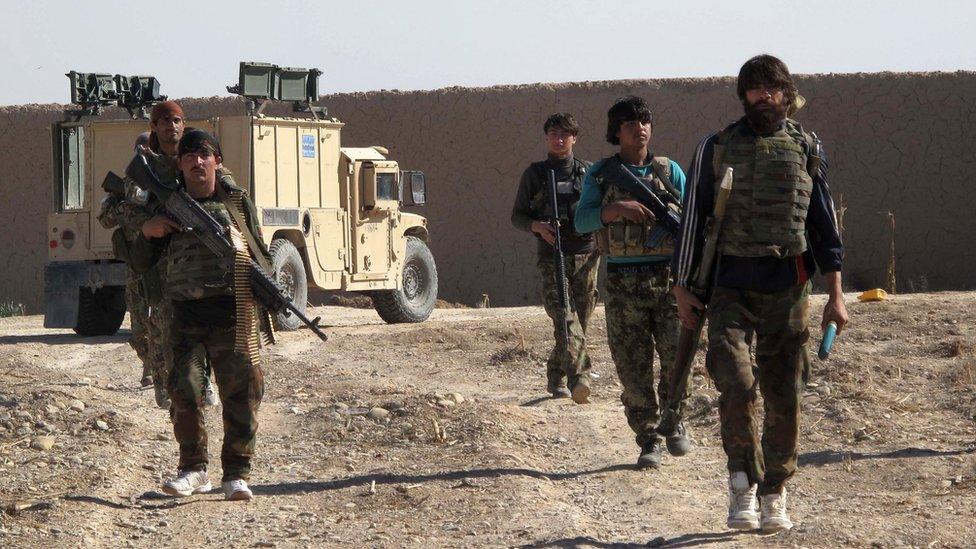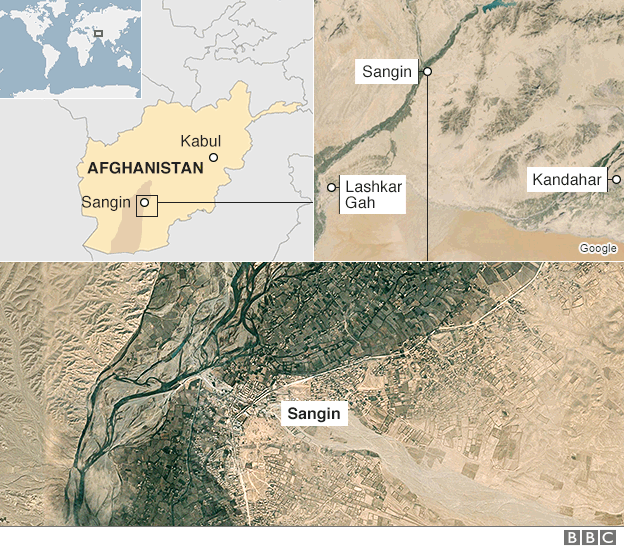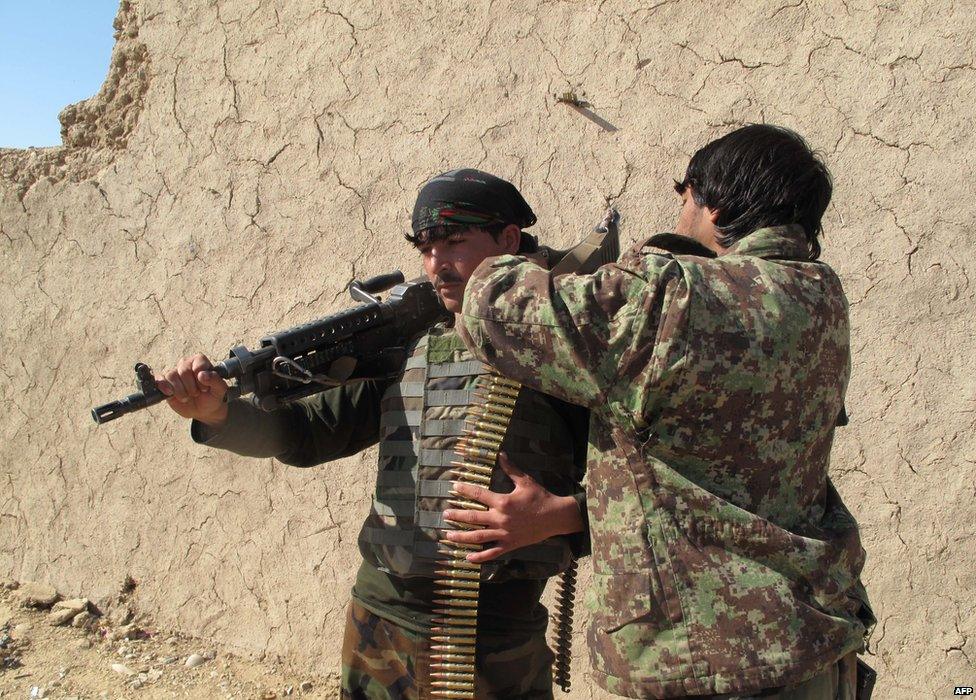Battle for Sangin: Why is this part of Helmand so important?
- Published

Afghan soldiers are fighting a losing battle for control of Sangin district in Helmand
Sangin was once the centre of operations for international forces in Afghanistan, a key district that linked Lashkar Gah, the capital of Helmand province, to the province's northern districts.
But the Taliban has been regaining ground in Sangin and is now poised to recapture the district from Afghan forces. Why is this part of Helmand so important to both sides?
Regaining full control of Sangin would increase the Taliban's mobility in the north of the province and cut a key supply line for Afghan forces with Lashkar Gah.
Sangin is also a rich opium production centre - meaning potential tax revenue for the Taliban from the drugs trade.

The big question now is whether the Taliban can maintain their recent territorial gains in the district. Zabihullah Mujahid, a Taliban spokesman, told the BBC late on Monday that the district administrative office had been abandoned by government forces. But Taliban fighters are cautious about entering it, he said.
The Taliban is more likely to keep administrative offices unoccupied, as they have done in the Musa Qala and Nowzad regions of Helmand - where 90% of the districts are said to be under Taliban control but the centres are with the government forces. The Taliban intentionally avoids centres of the districts, where they can easily be targeted.

Afghan soldiers are under new pressure in Helmand province
Keeping control of the centre of Sangin would not be easy for the militants, but they may have an advantage among the local population. Many locals are resentful of government troops following military operations earlier this year which they say wrought unwarranted destruction to homes, farms, and other property.
The Taliban will probably seek to exploit that resentment and foster as much sympathy for their cause as possible, as they did in Kunduz where fighters could be seen posing for photos with civilians.
If the government wants to wrest total control of the area from the militants, it should look to win hearts and minds - a strategy once trumpeted by the foreign forces which controlled this part of the country.
It should deploy troops who do not bear the grudges of those who fought in the civil war in 90s, soldiers who are not trying to settle old scores. Above all, it should do all it can to avoid perpetuating a cycle of violence in which the biggest victims are the local civilians.
- Published21 December 2015
